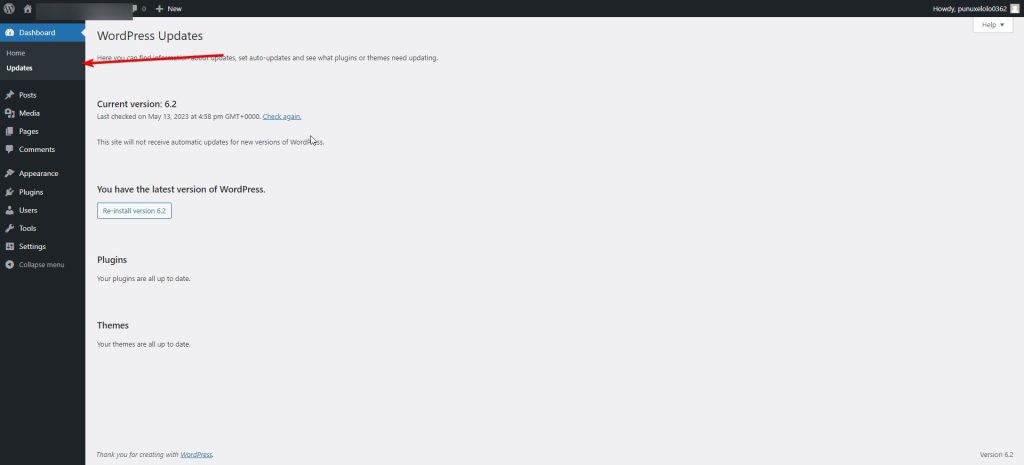I understand how important it is to keep my website up-to-date with the latest features and security patches. That’s why the automatic update feature is such a lifesaver – it takes the hassle out of manually updating my site and ensures that I’m always running the latest version of WordPress.
However, it can be frustrating when the automatic updates don’t work as expected.
In this article, I’ll share some tips and tricks to help you troubleshoot and resolve issues with WordPress automatic updates not working.
By following this guide, you can get your WordPress site back on track and enjoy the peace of mind that comes with knowing your website is secure and up-to-date.
Table of Contents
Why Are Automatic Updates Important?
As a WordPress website owner, I can’t stress enough the importance of automatic updates. They play a crucial role in maintaining the security and performance of my site. In this section, I’ll share some of the key reasons why automatic updates are essential for any WordPress website.
- First and foremost, security is a top priority for any website owner. With the constant evolution of online threats, it’s crucial that I keep my site up-to-date with the latest security enhancements. Automatic updates provide an efficient way to ensure my website is always protected against newly discovered vulnerabilities.
- In addition to security, automatic updates can greatly improve the overall performance of my WordPress site. Updates often include fixes for bugs, as well as optimizations that can make my site load faster and perform better. This not only helps with user experience but also potentially helps with search engine rankings.
- Core updates, which include both major and minor releases, are essential to the overall stability of my WordPress site. Major releases come with new features and improvements, while minor releases focus on bug fixes and security patches. By enabling automatic updates, I’m ensuring that my site benefits from all the latest enhancements WordPress has to offer, without having to worry about manually updating it each time.
Common Reasons for WordPress Automatic Updates Not Working
Let’s break down some of the most common reasons why WordPress automatic updates may not be working on your website.
1) Make sure Right File Permissions are set a Hosting Level
File permissions play a crucial role in WordPress updates. If my file and folder permissions are not set correctly, the automatic update process may fail.

Improper file permissions could disallow WordPress from accessing the necessary files to perform an update. Here’s what I looked into:
- Ensure that all directories have 755 permissions.
- Verify that all files have 644 permissions.
To change file permissions, I accessed my hosting account’s file man
You can also read more about this from here
2. Your WordPress Plugin or Theme Might be Conflicting
Another reason for WordPress automatic updates not working could be plugin or theme conflicts. In some instances, outdated or poorly coded plugins and themes may interfere with the update process. To rectify this issue, I would advise:
- Updating all plugins and themes to their latest versions
- Deactivating all plugins and then testing the update process
- Switching to a default WordPress theme and testing the update process
By doing this, I can identify the problematic plugin or theme and take necessary action.

You can use this plugin to troubleshoot the plugins & theme without harming your live website, as plugins are deactivated in safe mode, i.e., only for backend.
Caching and Browser Cache
Caching issues could also cause WordPress automatic updates to fail. Here are some ways to tackle caching problems:
- Clear website cache: If I’m using a caching plugin, I need to clear the cache and try updating again.
- Purge website’s server cache: If my hosting provider has server-side caching enabled, I should contact them to help purge the cache.
- Clear browser cache: Sometimes, the browser cache can lead to problems with updating. I should clear my browser cache and force-refresh the WordPress dashboard.
By addressing these common issues, I’ll be better equipped to ensure my website’s automatic updates work correctly.
If you require any help to find this, feel free to connect with me, I can help with this
Are you Spending hours:
- Managing your WordPress website?
- Troubleshooting Technical difficulties?
- Dealing with plugin Security Issues?
- Website Uptime Monitoring?
- Cleaning Hacked Sites?
Let me take care of your WordPress website, so you can focus on scaling your agency.
Give your clients top-notch VPS Hosting for blazing fast performance, 24×7 security monitoring with autopilot safe plugin updates.
I will help you free up time by managing WordPress websites.
Ensure WordPress Automatic Updates are Enabled if Not
If you want to enable automatic updates after disabling them, or you’d like to have more control over the update process, follow these steps:
- Open the
wp-config.phpfile again in your website’s root folder. - Remove the line of code you previously added or change it to:
define('WP_AUTO_UPDATE_CORE', true);
- Save the changes and close the file.
Now, automatic updates for WordPress core files are enabled.
It’s worth mentioning that you can also control plugin and theme updates by adding filters to your functions.php file, located in your theme’s folder.
For example, you can add the following code to enable automatic updates for all plugins:
add_filter('auto_update_plugin', '__return_true');
For automatic updates on themes, use the following code:
add_filter('auto_update_theme', '__return_true');
These are the basic steps to disable and enable automatic updates in WordPress. Remember to always make a backup of your website before making any changes to the core files, plugins, or themes. This will ensure you can quickly revert your website to a previous state if something goes wrong.
If you manage multiple websites for your clients, then check this blog, where I discuss everything you need to know to manage websites for your clients in bulk.
Try Updating WordPress Manually
Sometimes, the automatic update feature in WordPress might not work as expected. In such cases, you can manually update your WordPress installation to fix the issue. Let me walk you through the process step by step:
First, log in to your WordPress dashboard using your username or email and password. Once you are there, check if you see a notification beside the “Updates” menu. This usually appears if your website is running on an older WordPress version.
Before you proceed, I highly recommend backing up your WordPress site. You never know what might go wrong, and a backup can be a lifesaver.
To update WordPress manually from your dashboard, click on the “Updates” menu. You’ll see an “Update Now” button – click on it to initiate the updating process. The system might take a few minutes to complete the update, so be patient.

Alternatively, you can update WordPress using an FTP client or cPanel’s File Manager.
To do this, first, download the latest version of WordPress from the official website. Then, extract the files on your computer and upload them to your website’s WordPress directory, replacing the existing files with the new ones.
While doing this, remember to exclude the wp-content folder, as this contains your themes, plugins, and uploaded files. Overwriting this folder by mistake could delete your site’s content.
After successfully completing these steps, your WordPress site should be updated to the latest version. Check your dashboard to verify the update was successful. These manual update methods can come in handy whenever automatic updates fail to work.
I share my Learnings & Case studies via email.
Subscribe to Stay Updated
Conclusion
As I wrap up this article on fixing WordPress automatic updates not working, I’d like to mention a few resources that have been invaluable in my research. The WordPress.org website has been an essential source of information for me, and following their recommendations can be instrumental in addressing the issue.
Remember that maintaining your WordPress website is an ongoing process, and keeping yourself updated with the latest information is key to avoiding and resolving issues like automatic updates not working. Stay vigilant, and don’t hesitate to seek assistance from the abundant resources available to you.
Happy WordPress-ing!
Frequently Asked Questions
Why are your WordPress automatic updates not working?
There are several reasons why your WordPress automatic updates may not be working, including incorrect file permissions, outdated WordPress version, plugin conflicts, or disabled automatic updates.
How do I fix WordPress automatic updates not working due to incorrect file permissions?
Yes, you can disable WordPress automatic updates by adding the following line of code to your wp-config.php file: define(‘WP_AUTO_UPDATE_CORE’, false);. However, it is not recommended to disable automatic updates because it can leave your website vulnerable to security threats.
Can I disable WordPress automatic updates?
You can enable WordPress automatic updates by adding the following line of code to your wp-config.php file: define(‘WP_AUTO_UPDATE_CORE’, true);. You can also use a plugin like Easy Updates Manager or Advanced Automatic Updates to manage automatic updates.
How do I enable WordPress automatic updates?
To fix WordPress automatic updates not working due to plugin conflicts, you can try disabling all plugins and then re-enabling them one by one to identify the problematic plugin. Alternatively, you can use the Health Check plugin to troubleshoot plugin conflicts.
What are WordPress automatic updates?
WordPress automatic updates are a feature that allows your WordPress website to automatically update its core software, plugins, and themes to the latest version without requiring any manual intervention.
What are the benefits of WordPress automatic updates?
The benefits of WordPress automatic updates include improved security, bug fixes, new features, and compatibility with the latest versions of WordPress software, plugins, and themes.
